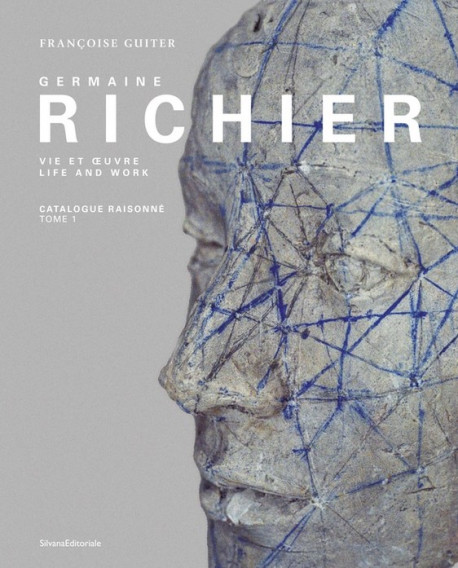No products
Product successfully added to your shopping cart
There are 0 items in your cart. There is 1 item in your cart.
Our webstore uses cookies to offer a better user experience and we consider that you are accepting their use if you keep browsing the website.

Catalogues raisonnés
- New Art Books
- Exhibition catalogue
- Highlights
- Art Book Sale
- Museum's Shop & Gifts
- Bilingual art books and foreign editions
- Children's Books
- Art History
- Painting
- Architecture
- Sculpture
- Drawing & Engraving
- Photography
- Contemporary art
- Decorative Arts & Design
- Art Techniques
- Critics
- Entertainment art books
- Civilisations
- Partners Reviews
Germaine Richier. Vie et oeuvre - Catalogue raisonné, Tome 1
Germaine Richier, the first woman to have an exhibition of her work at the Museum of Modern Art in Paris (1956), is a remarkable figure in the world of modern sculpture, whose works are present in the world’s most prestigious museums, including the Centre Pompidou, MoMA and the Tate Modern.
Shipped within 4 to 8 days
| Model | 9788836652808 |
| Artist | Germaine Richier |
| Author | Françoise Guiter, Sophie Guiter |
| Publisher | Silvana |
| Format | Relié et broché avec rabats avec étui |
| Number of pages | 560 Catalogue raisonné + 104 Livret mobile |
| Language | Français / Anglais |
| Dimensions | 300 x 240 |
| Technique(s) | Illustrations 743 |
| Published | 2024 |
Germaine Richier's powerful and visionary art stands out in its profound desire to explore the human essence, the constant search for an authentic representation of mankind, likening it, indeed, to the work of her friend Alberto Giacometti.
The Second World War had a shattering impact on the artistic and intellectual world of the Montparnasse of the 1920s and 30s; Germaine Richier spent the war years far from her family, in the native Switzerland of her husband, sculptor Otto Charles Bänninger. This painful exile would be one of the crucial turning points in the transformation of her art.
Trained in the painstaking school of the bust by her teacher Antoine Bourdelle, she chose to stray from the beaten track, to invent something new. Natural elements – tree branches or insects – from the countryside of her native Languedoc merged into her creations: this was the origin of her “hybrid creatures”.
The originality of her sculpture, of her forms, manifested itself with increasing intensity. In 1946, she decided to return to France, driven by the need to be reunited with her family and her country. With her return to Paris, her creative freedom underwent a veritable explosion: her sculptures came to embody daring, innovative and original representations of Man and Woman, which, as they come to life, reveal new visions of the human condition.
The sculptor was captured in her studio by her friend, the photographer Brassaï, surrounded by characters that seem to originate in some fantastic kingdom: L'Homme-forêt, L'Araignée, La Mante and La Cigale co-exist with L'Ogre, Le Diabolo, La Feuille and Don Quichotte.
These hybrid creatures, these new characters, fruit of a fervent imagination, populate her artistic universe, where the human form is transformed and enriched with mystery and colour, an element that Germaine Richier began incorporating into her works in the final years of her life, interrupted far too soon in 1959.
Her sculpture is a world in constant evolution, a place where the figure never disappears but rather is reinvented, mutates, evading all attempts at classification. And her thought-provoking, visually stunning works continue to plumb the depths of the world around us.
This work is accompanied by a booklet that provides a list of 687 exhibitions and more than 4,000 bibliographic references.
Recently viewed items


















